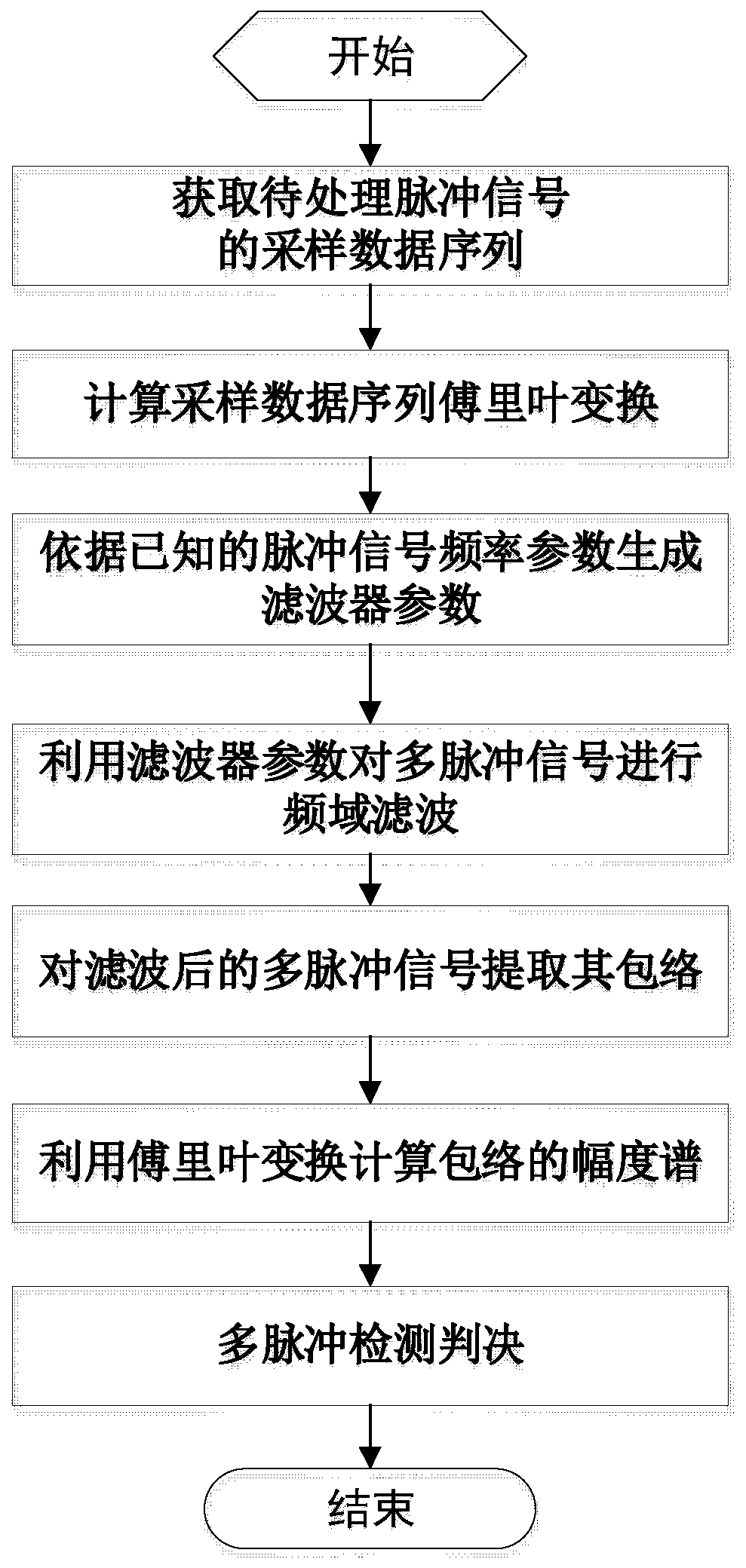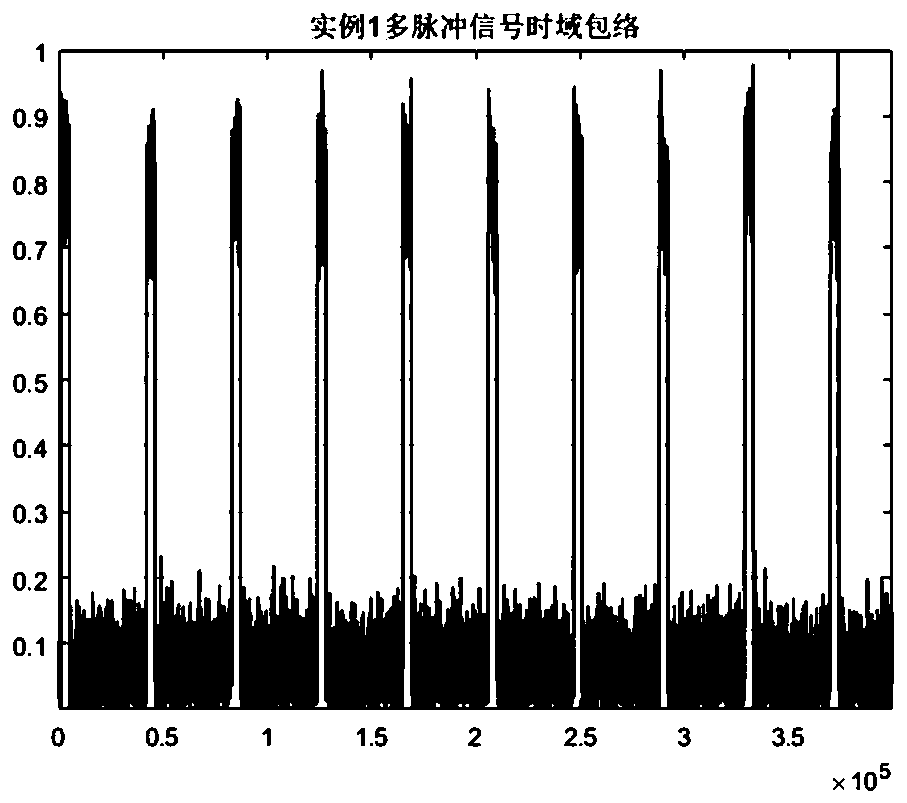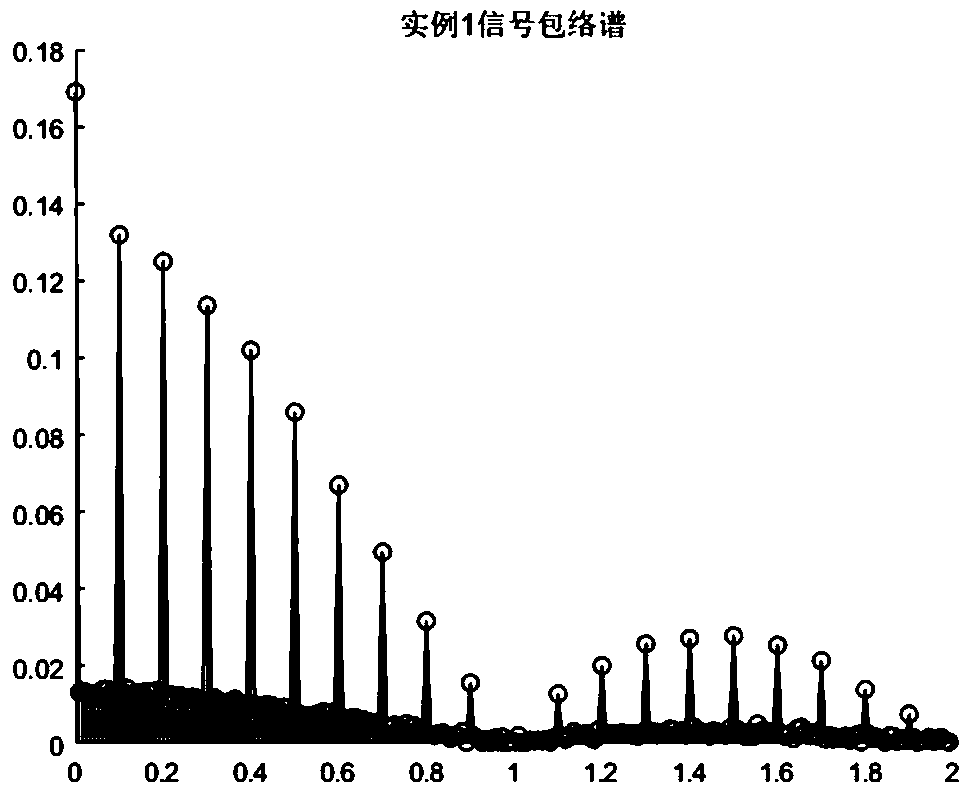Pulse signal detection method based on multi-pulse envelope spectrum matching
A multi-pulse signal and pulse signal technology, which is applied in the field of signal processing, can solve the problems of poor ability to suppress noise, small amount of calculation, and non-smoothness, and achieve the effect of suppressing the influence of detection performance and improving the gain of signal-to-noise ratio.
- Summary
- Abstract
- Description
- Claims
- Application Information
AI Technical Summary
Problems solved by technology
Method used
Image
Examples
Embodiment 1
[0132] The simulation signal parameters are set as follows: signal amplitude A=1, initial phase Pulse width τ=1.0s, pulse period T=10.0s, multi-pulse signal first pulse arrival time τ 0 =0.256s, signal start frequency f 1 =300Hz, the signal stop frequency f 2 =300Hz, that is, the simulated signal is a narrow-band pulse signal, the number of sub-pulses is N=10, and the sampling frequency is f s =4096Hz, single cycle data points M 1 =40960, observation data sequence points L=NM 1 =409600, frequency resolution Δf=0.01Hz, signal-to-noise ratio SNR=5dB, m is the serial number of the sub-pulse.
[0133] According to step (2), calculate the discrete Fourier transform X(l) of the data sequence x(n).
[0134] In step (3), calculate the passband starting discrete frequency index k M = 27000, passband termination discrete frequency index k L =33000, the generated frequency domain filter coefficient is H(k)=2, 27000≤k≤33000;
[0135] According to steps (4) and (5), the multi-puls...
Embodiment 2
[0139] The simulation signal parameters are set as follows: signal amplitude A=1, initial phase Pulse width τ=1.0s, receiving signal duration T=10.0s, multi-pulse signal arrival time τ 0 =0.256s, signal start frequency f 1 =300Hz, the signal stop frequency f 2 =400Hz, that is, the simulated signal is a broadband pulse signal, the number of sub-pulses is N=10, and the sampling frequency is f s =4096Hz, observation data sequence points L=NM 1 =409600, frequency resolution Δf=0.01Hz, signal-to-noise ratio SNR=3dB, m is the serial number of the sub-pulse.
[0140] According to (2) step, calculate the discrete Fourier transform X (l) of described data sequence x (n);
[0141] In step (3), calculate the passband starting discrete frequency index k M = 27000, passband termination discrete frequency index k L =44000, the generated frequency domain filter coefficient is H(k)=2, 27000≤k≤44000;
[0142] According to steps (4) and (5), the multi-pulse signal envelope is extracted ...
PUM
 Login to View More
Login to View More Abstract
Description
Claims
Application Information
 Login to View More
Login to View More - R&D
- Intellectual Property
- Life Sciences
- Materials
- Tech Scout
- Unparalleled Data Quality
- Higher Quality Content
- 60% Fewer Hallucinations
Browse by: Latest US Patents, China's latest patents, Technical Efficacy Thesaurus, Application Domain, Technology Topic, Popular Technical Reports.
© 2025 PatSnap. All rights reserved.Legal|Privacy policy|Modern Slavery Act Transparency Statement|Sitemap|About US| Contact US: help@patsnap.com



